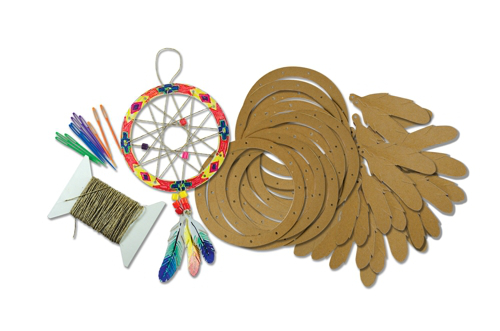
These classroom friendly crafts integrate cultural crafts and mathematics to create a beautiful piece of art!
Dream catchers originated with the Ojibwe people. Traditionally, dream catchers were hung over cradles to protect babies and young children from bad dreams. Dream catchers can be simple wooden hoops with leather, rawhide, or plant-based cords used to create the iconic webbing.

Our dream catchers use chipboard hoops and cord, which means they are perfect for small hands to decorate! We suggest using white paint to cover the hoops and feather before using markers, crayons or colored pencils to decorate your dream catcher. Paint shows up without the need for a white base coat.

When it’s time to weave your dream catcher’s web, we suggest numbering each of the holes and following one of these patterns:
- 7,3,11,7,2,9,4,11,6,1,8,3,10,5,12,7
- 1,10,7,4,1,8,3,10,5,12,7,2,9,4,11,6,1
- 1,9,5,1,7,3,11,7
- 1,8,3,10,5,12,7,2,9,4,11
We have created a video to show you the whole process!
Weaving your dream catcher is a math connection, but there are literary and cultural connections to explore too! We suggest pairing this craft with some of these awesome books:
- Grandmother’s Dreamcatcher by Becky Ray McCain
- The Dreamcatcher by Philip Nicklin

Like us on Facebook, Share this post with your friends, or Subscribe to this blog today to receive original craft project updates every week
